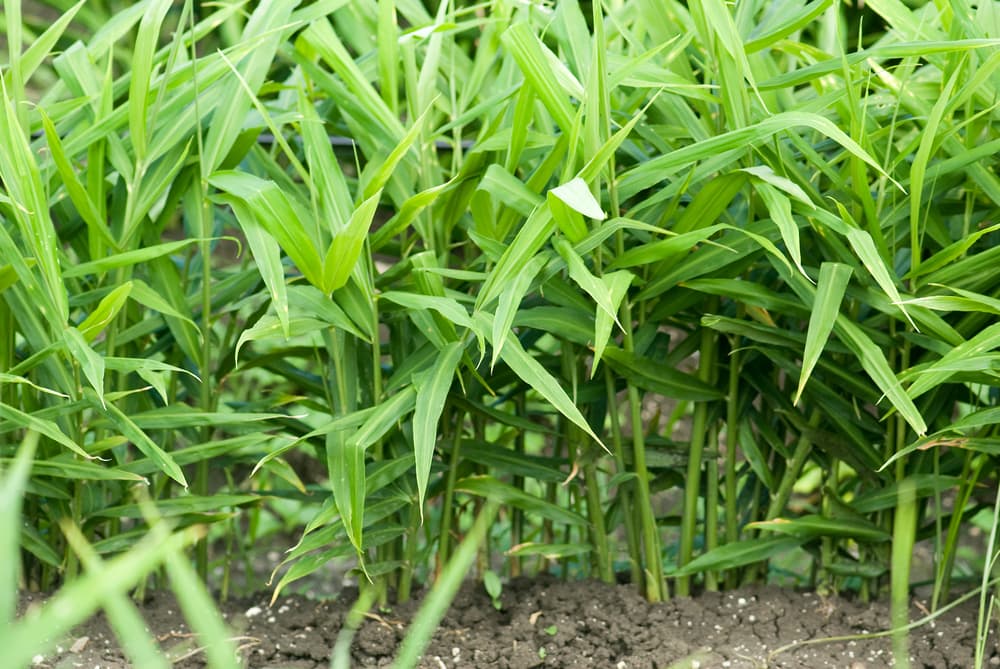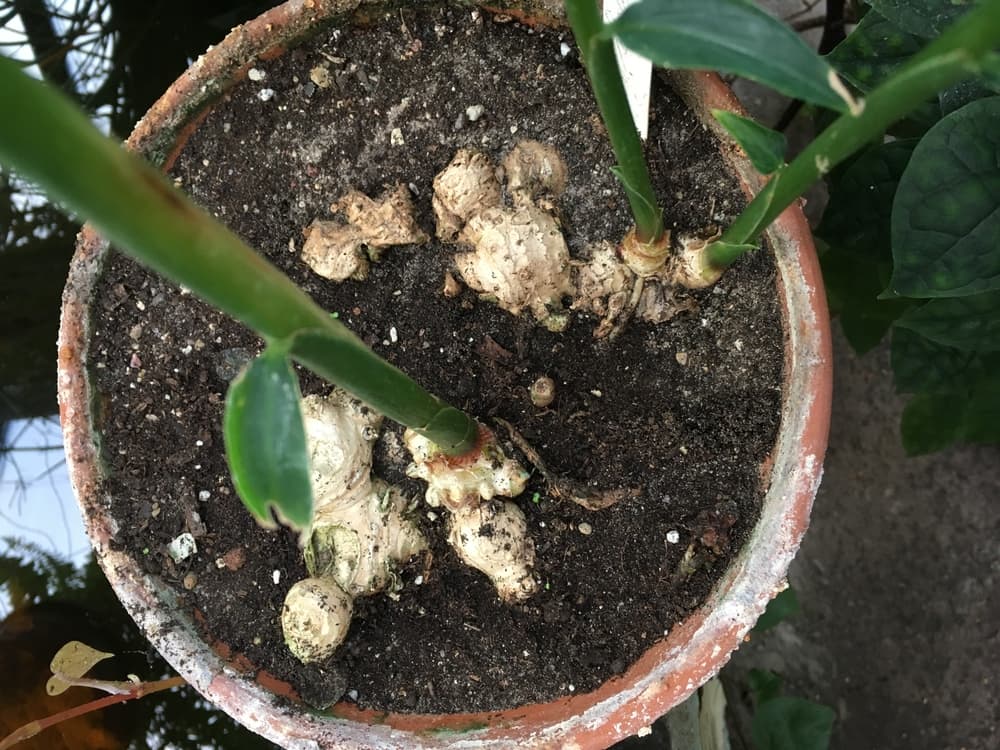PERENNIALS > GINGER

Elizabeth is a Permaculture Garden Designer, Sustainability Consultant and Professional Writer, working as an advocate for positive change. She graduated from the University of St. Andrews with an MA in English and Philosophy and obtained a Diploma in Applied Permaculture Design from the Permaculture Association.
Reviewed By COLIN SKELLY

Colin is a Horticulturist and Horticultural Consultant with experience in a range of practical and managerial roles across heritage, commercial and public horticulture. He holds the Royal Horticultural Society’s Master of Horticulture award and has a particular interest in horticultural ecology and naturalistic planting for habitat and climate resilience.
IN THIS GUIDE
GINGER GUIDES
Even in the temperate UK climate, you can grow tropical plants like ginger at home.
However, it is important to understand that ginger is not a plant that you can just pop in your outdoor garden.
This is something you will have to grow under cover in a greenhouse or polytunnel, or inside your home.
If you plan and prepare correctly, and take care of your plants with their needs in mind, you can succeed in growing ginger in the UK.
“It can be great fun growing tropical crops in the UK, even if the harvest might dubiously justify the effort,” says Master Horticulturist Colin Skelly.
“There are ornamental gingers but growing from a supermarket stem sounds like a great project to get children engaged with where their food comes from!”
Overview
| Botanical Name | Zingiber officinale |
| Common Name(s) | Ginger |
| Plant Type | Perennial / Houseplant |
| Native Area | Island South-East Asia |
| Hardiness Rating | H1A |
| Foliage | Slender pseudo-stems |
| Flowers | Purple flowers; uncommon to see these in UK cultivation |
| When To Sow | February, March |
| Flowering Months | October, November |
Sunlight
Preferred Sunlight
Full Sun
Exposure
Sheltered
Size
Height
0.3 – 1M
Spread
0.1 – 0.5M
Soil
Preferred Soil Type
Free-draining yet moist medium
Moisture
Moist but well-drained
pH
Neutral
Ginger is a perennial herbaceous plant – Zingiber officinale.
It is generally grown for its underground stems, or rhizome, which are used fresh, or ground to make a common dried spice.
Interestingly, this is not a plant that is found in the wild – it is only found in cultivation.

The plant grows to an eventual height of between 30-100cm.
It forms slender pseudo-stems that are sometimes harvested for an additional yield known as stem ginger.
Inflorescences of yellow and purple flowers form on shoots that rise separately from the rhizome, though these are rarely seen when the plants are grown in temperate climates.
Why Grow Ginger?
Ginger is a very useful cooking ingredient and spice that can be very useful in a wide range of different recipes.
It is a food-producing plant that can be grown at home even by those without a garden.
You can grow it in a container even in the smallest of spaces.
How To Grow Ginger
The end of winter is a good time to plant ginger in temperate climates like ours here in the UK, but you can give this a try at any time of year when you are growing ginger inside.
Choosing Rhizomes
Ginger is grown from rhizomes (commonly referred to as root sections).
These can be bought online or sometimes from local plant nurseries.

You may also be able to root fresh ginger that you have bought from the shops.
It is worth noting that ginger for sale in supermarkets may have been treated to prevent shoots from forming.
If this is the case, soaking the root in water for 24 hours prior to planting may help (by washing away treatments used to slow growth).
When choosing a rhizome, note that the larger it is, the more quickly the ginger will be produced.

You are looking for a rhizome with small nodules similar to the chits that appear on potatoes.
New growth will form from these small growth buds.
Container Growing
Choose a rich and fertile, moist but free-draining growing medium and a container that will allow that growing medium to dry out well between waterings while still retaining some moisture for your plant.
Remember, when choosing a suitable container, that you are growing ginger mostly for what lies beneath the surface.
So a tall, narrow pot that allows roots to delve deeper as the above-ground plants grow is the best option.
Place your ginger rhizome into a pot or container with the green growth buds popping out just above the surface of the growing medium.
Habitat & Growing Conditions
It is important to remember, when choosing where to place your ginger plants in containers, how and where ginger grows in a more natural environment.
Ginger thrives in moist to wet tropic environments.
It grows best where daytime temperatures of between 18-28°C are maintained – though it can also cope in temperatures as low as 12-13°C and as high as 35°C.

It will tend to go dormant at temperatures lower than those of the optimal range.
Though ginger may prefer a partially shaded spot in hotter climates, when grown in the UK it will do best when given as much sun as possible.
In order to encourage ginger grown indoors in our climate to root successfully, it can be helpful to provide gentle bottom heat (from a heated propagator, or heat mat, for example).
However, ginger will often root and shoot successfully when simply placed in a warm position on a sunny windowsill.

Ginger plants require relatively high humidity – and this can be one of the biggest challenges when growing ginger indoors in a temperate climate.
Since central heating can really dry out the air, it can be beneficial to place ginger in a location where the humidity remains somewhat higher, such as on a kitchen windowsill close to the kitchen sink, or in a light, bright bathroom.
Ginger Plant Care
It is important to make sure that the growing medium around your ginger stays moist, but does not become waterlogged.
You should water well but ensure that the medium and container are free-draining.
When growing indoors, it may also be necessary to mist your plants to increase humidity levels.

As your ginger plant shoots and begins to grow, it will be important to pot it up regularly.
If it is doing well, by midsummer (having been planted in late winter) it should be in a rather large container (such as a 20-litre pot or grow bag, for example).

